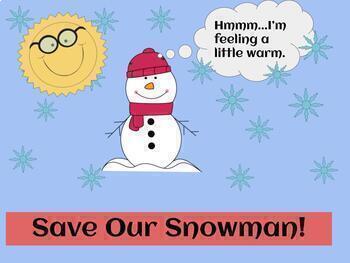Heat Energy Save Our Snowman STEM Engineering Activity Google Slideshow
- Google Slides™

Description
Want a lesson that is laid out for you step by step on the smartboard? This is a guided lesson that will take you from start to finish as you teach your students all about heat energy and measuring the volume of a liquid. The big engineering question you will assign your students is, "Can you make a house that will insulate your "snowman" ice cube from the heat so he won’t melt?" This will all take place after you brainstorm and discuss insulators and conductors. Each slide tells you and the students what to do with text and visuals. You can even assign this slideshow to your students in Google Classroom.
This lesson can be used for digital, distance learning to send out in Google Classroom to students or as a link in an email to parents.
Students will:
1) Make predictions for what the best materials are for protecting their "snowman"
2) Understand conductors
3) Understand insulators
4) Name conductors
5) Name insulators
6) Use a graduated cylinder or a liquid measuring cup with ounces and read the results
7) Engineer an insulated house for a cube of ice, the snowman
8) Record and report data
You will need the following materials to complete this STEM engineering challenge:
1) recyclables such as shoeboxes, plastic and cardboard food containers, construction paper, etc...
2) Tape or a glue gun
3) Rulers
4) Graduated cylinders or liquid measuring cup with ounces could be used
5) Tiny cups to hold an ice cube that you can get from your cafeteria.
6) Book: Snowmen All Year
By: Caralyn Buehner (You can find a great read aloud of this on youtube).
7) a gmail account for this Google Slides Presentation
Students can record their problem, explanation, drawings, data, and potential graph on their own paper, STEM journal, or in a Google document.





